How to learn to ride a hoverboard?
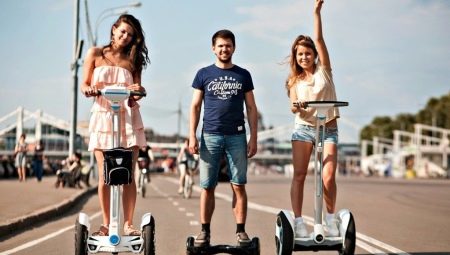
Today, a hoverboard is as common as a bicycle and scooter. Many people are fascinated by the unusual vehicle, but refuse to buy, fearing that the Segway will be too difficult to operate.

Fundamental rules
In fact, learning to ride a hoverboard is not as difficult as it might seem. The task is simplified if the skater already has skills in owning a skateboard or roller skates. Very often, a quarter of an hour is enough to learn how to keep balance, and a couple of hours later, a person moves short distances without any support.
The gyro scooter works thanks to the presence of sensors that respond to changes in body position. Thus, balance is maintained during movement, and a special program synchronizes all the processes that occur.

One of the main rules for using a segway is compliance with the chosen model and roads for movement.
- First class hoverboards have small wheels with a diameter of only 4.6 inches. They are allowed to be used only on absolutely flat surfaces, since the slightest depression or a sharp rise will lead to scratches and even breakdown of the case.
- The second class models are equipped with 6.5-inch wheels. They are also used on level surfaces to avoid shortening the service life. Despite the gap between the device itself and the road, the presence of rubber tubeless wheels creates certain limitations.
- Segways of the third class are equipped with 8-inch tires. This allows you to operate the device not only on asphalt roads, but also on the lawn, ground and even in puddles. Nevertheless, it is better not to use the device on bad roads - the occurrence of strong vibration will lead to a deterioration in the condition of the hoverboard.
- Finally, the fourth class devices with a wheel diameter of 10 inches, as well as an inflatable chamber system can be used on absolutely any surfaces.

As for the winter season, it is not forbidden to use a segway at this time, but only if a number of conditions are met. It is important to keep the platform level above the snow level, otherwise the device will quickly get stuck... You will have to maintain a moderate speed of movement and be prepared for the fact that after one and a half hours of operation, the battery will fail.
Plastic models will not be able to stay in the cold for a long time, unlike carbon ones. The operation of the vehicle should always be completed by drying and wiping the hoverboard.

For beginner owners of a segway, it is recommended not to go straight to skiing without a rudder, but to first purchase a model equipped with a handle or a steering column. Such a device is much easier to operate, in addition, it becomes possible to learn how to maintain balance in more comfortable conditions.
An important question is how long the gyro scooter can move, since the device requires periodic charging. Usually, Segway can cover 25 kilometers without stopping, but the exact data is always indicated in the vehicle instructions and depends on the model chosen... When the device runs out of power, it is best to put it in a dedicated carrying bag.
When planning a route, you need to keep this aspect in mind. and do not go where it will be difficult to get back on foot... In addition, it is important to remember that the gyro scooter cannot be accelerated by more than 20 kilometers per hour and, of course, at this speed you should not ride where there are a lot of people.

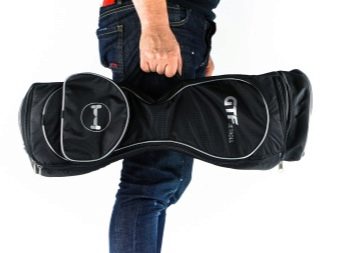
How to get up correctly?
A simple instruction allows even a child to quickly teach how to get up on a gyro scooter. The first step is to find a perfectly flat horizontal surface without any dents, drops and damage. If possible, the workout should even be done at home. A good recommendation is to study everything either on your own or with a professional, since the audience in this situation will be superfluous.
Before climbing on the hoverboard, turn it on and check if the sensors are in order. The easiest way to do this is by placing your hands on the footrests and rocking them back and forth.

Then you can climb onto the segway. The device is installed in front of an assistant or in front of a wall to which you can hold onto. The first leg is placed very carefully on the support so as not to create a tilt. The device should vibrate in response, giving a signal that it is ready to start. As soon as balance is felt, you can put on the other leg.
The final position should be clear and stable, and the body should be located exactly in the center. The gaze is directed only forward, the eyes do not drop. The knees are slightly bent, and there are no unnecessary movements and waving hands.
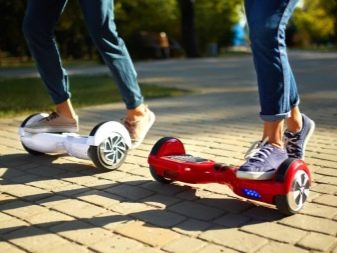
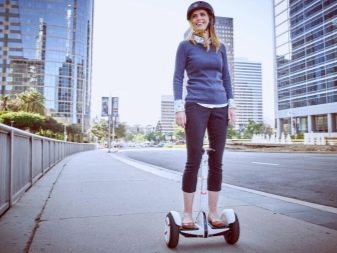
Learning to manage
As mentioned above, for beginners it is better to purchase a gyro scooter with a handle. Once you learn how to ride it, it will be much easier to use the device without a steering wheel. The riding process begins with the correct positioning of your body on the platform. Next, you need to understand the following: if the body leans forward, the segway moves forward, and if the body is tilted backward, the segway either leans back or stops. Turns are due to a slight tilt to the right or left.
The first step for a beginner is to try to tilt the whole body forward, but not too intensely. The vehicle will drive, and once balance is achieved, you can try to lean back and stop the device. When such a procedure is carried out for the first time, it is better if someone will hold the rider's hand or just hedge around. The next stage is learning to move backward with a neat and quick stop. For the first times, backward bends are best done with a helmet and additional protection, since a fall is likely.
It is important to remember that the higher the incline, the higher the speed. Legs slightly bent at the knees help maintain balance. Hands can be kept either in pockets or on a belt, since they are not involved in movement. If you take things with you, then their weight should not exceed 5 kilograms.
For braking, it is important not only to lean back, but also to try to transfer the weight to the heels. First, of course, the hoverboard will start to move backward, but then the device will stop.


How to turn?
Segway turns require prior training, but in general they are also not particularly difficult. When it is necessary to turn to the left, the weight is transferred to the right leg, and when it is necessary to turn to the right, the weight is transferred to the left leg.
Confusion usually arises at first, but a few training sessions will solve the problem. For a 360-degree turn, you will need to do it differently. The heel of the right foot is pressed against the surface of the hoverboard and deviates slightly backward, and the toe of the left foot, also pressing against the platform, presses forward.

Various tricks
Before moving on to tricks, it is important to memorize the safety rules. It is better not to move without protection, since the device develops a speed of up to 25 kilometers per hour, and in an emergency situation, the fall will be very painful. At first, the gyro scooter will obviously crash into the asphalt sides or fall, so you should also take care of the protection made of plastic or silicone.
In no case is it recommended to ride a vehicle while drinking alcohol, and also allow children to ride it without additional protection.

One of the simplest tricks is spinning in one place. If you have to turn to the left, then you need to bend to the left and slightly forward, while the other leg should remain in its original position. The hoverboard, thanks to this, will spin around the leg that exerts pressure. To increase the speed, you need to push harder on the surface towards the front.

Another interesting trick is "Snake" looking extremely impressive. The segway is positioned sideways so that the drive wheel disk looks in the direction of travel. To change direction, you need to create a forward and backward movement of your foot, which requires a little training.
The "snake" is carried out due to the fact that the center of gravity falls on one leg, and the other leg is responsible for the movement and pressure, just the one that corresponds to the direction of movement. That is, if the hoverboard goes to the right, then the right leg is responsible for the movement, and if it goes to the left, then, accordingly, the left.
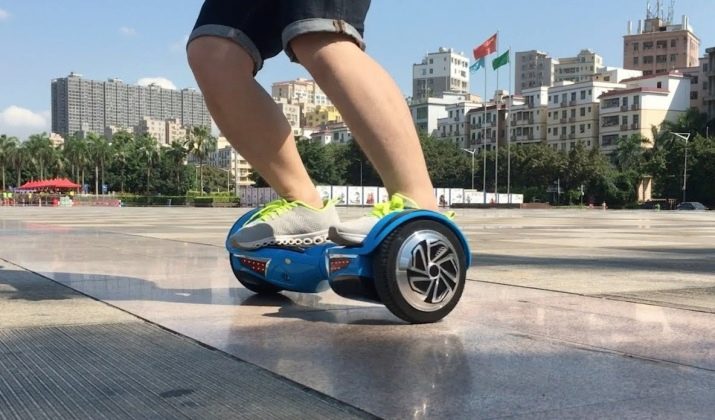
Curbs are already available for those people who are well trained in simple movement on a segway and have mastered such qualities as composure and coordination of movements. To begin with, you should only move on wide wheels and master a height that does not exceed 3-4 centimeters. In the future, this level is allowed to increase to 5-7 centimeters. There are two ways to learn how to overcome curbs. In the first variant, sufficient speed is gained to create the impulse necessary to overcome the obstacle.
In the second version, one wheel is wound onto the curb with the help of the leg that is the leading one for the rider. Next, a 180-degree turn is made, as a result of which the second leg, together with the gyro scooter itself, is on the curb.

Having mastered the usual rotation, you can go and to rotation on one leg, carried out with the help of balance. To do this, you need to press on the gyro scooter exclusively with the leading foot, which determines in which direction the rotation will be carried out. Having securely settled on the platform, you need to sit down, rest your opposite hand on the body, and stretch your free leg parallel to it. Further, the working leg initiates movement in the required direction.
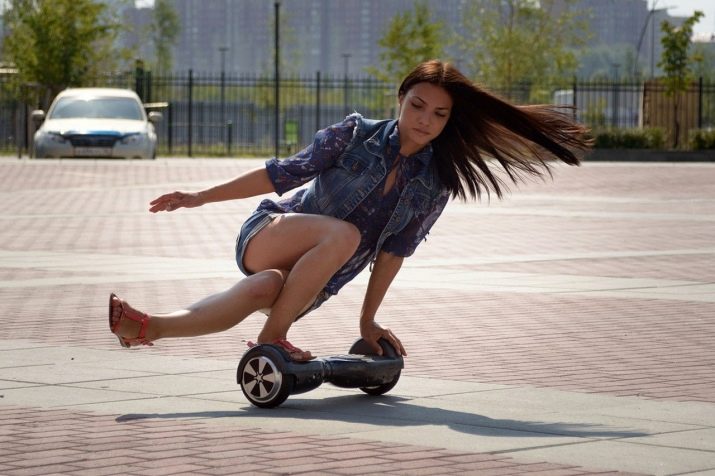
See the following video for tips on how to learn how to ride a hoverboard.








